The Algarve coast of southern Portugal has a warm and dry climate well suited to both a beach holiday or a golf holiday . Praia da Luz is on the extreme west of the Algarve, just 5 km west of Lagos, just an hour’s drive from Faro airport. The relaxed atmosphere of Praia da Luz, and the fine sandy beach of Luz bay, have made this a favourite holiday destination for countless visitors.
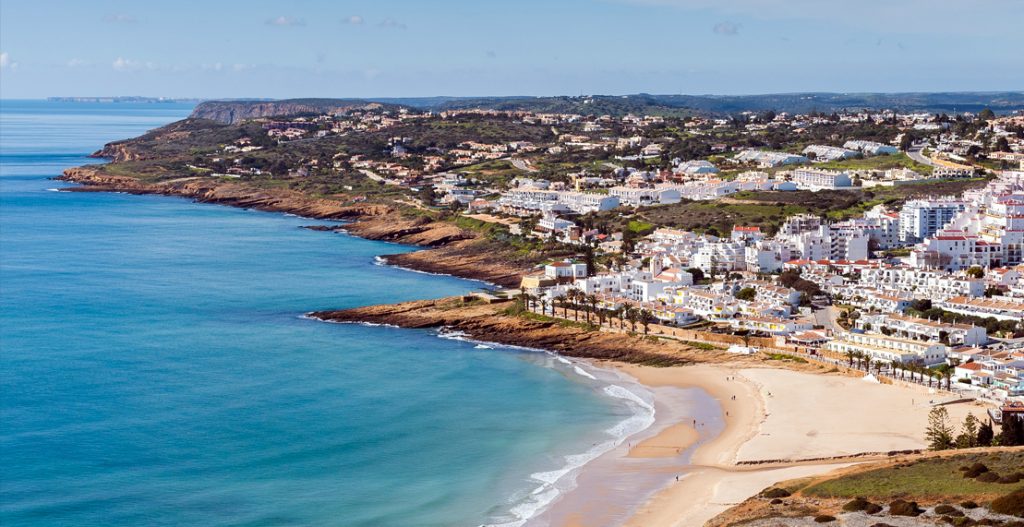
Praia da Luz is the ideal location from which to explore the Algarve. Literally translated, Praia da Luz means Beach of Light, and dates back to Moorish times, when beacons were lit to warn fishermen at sea of the approaching danger from the Moors. Praia da Luz is a lovely picturesque fishing village, positioned around a large bay, with a wonderful soft, sandy beach. It boasts a beach where there are good conditions for water sports – surfing, waterskiing, diving or pedalos. To the West the countryside has been little changed by development. Here you will find nature, birds and unspoilt beaches. Praia da Luz welcomes those who want a fairly get-away-from-it-all sort of family holiday with all the essential comforts but not too much razzmatazz. Of the coastal villages to the west of Lagos, Praia da Luz is the most developed, which means it is also the one which has lost a little more of its original fishing village charm. Small hotels, villas and apartments mingle with fisherman’s cottages, and there are a good range of restaurants and shops.
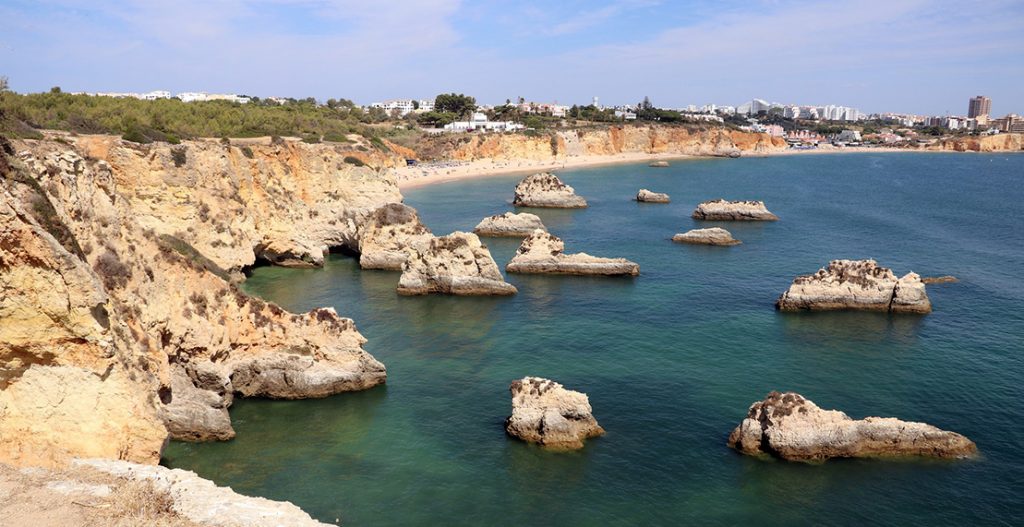
Lagos is the most historically interesting coastal town in the Algarve and is only 5Km from Praia da Luz. The old city walls and winding streets date from when Lagos was the capital of the Algarve and ships set sail from here to explore the world and bring home ships of spices and slaves. Its fame derives from its association with Portugal’s 14th-and 15th-century Age of Discovery. It was here that Henry the Navigator had his vessels built and prepared for the voyages of exploration down the coast of West Africa which ultimately led to the sea route past the Cape of Good Hope to India.
One of the most formidable milestones in the quest for a sea passage to the Orient was Cape Bojador, a headland on the bulge of Africa which struck terror in the hearts of medieval seafarers. It was an awesome promontory because of the myths and legend surrounding it, and because of the very real and treacherous winds and currents which made it difficult for sailing ships of the day to both round it and return. The first European captain to accomplish this was Gil Eanes, Lagos’ most famous son. He did so in 1495 at the behest of Henry the Navigator after many others had failed.
Both Henry and Gil Eanes are commemorated with statues in Lagos. Henry presides over the Praça da República. Gil Eanes is in front of the town walls a little farther along to the west. The town’s third statue is of the boy-king, Sebastião, who precipitated the demise of the Aviz dynasty in the 16th century by sailing from Lagos to a disastrous defeat in Morocco. Although the subject of many a rude remark, Sebastian’s statue in Largo Gil Eanes is by the highly-respected Portuguese sculptor, João Cutileiro.
Just before they set sail, Sebastian, then aged 21, is said to have given a final pep-talk to his troops from a small Manueline-style window, which you can see, fairly high up, in a corner of the town walls just to the left of Henry’s statue.
Like the window, the first market in Europe to auction slaves brought back from Africa by Henry’s explorers also looks rather forlorn and unexciting nowadays. You will find the slave market (mercado dos escravos), now a little art gallery, in the far corner of Praça da República.
The walls came tumbling down along with all the other buildings in Lagos with the great earthquake of 1755. Among those which were rebuilt and have since undergone renovation are the Church of Santa Maria with 16th-century traces, the 17th-century regimental storehouse next to it, and the beautiful “golden” Church of Santo António which forms part of Lagos’ rather eccentric museum.
The town’s hey-day was undoubtedly from 1420 to 1460 when Henry the Navigator stalked its waterfront and prayed in its churches. It remained a busy place until Sebastian’s debacle in Morocco. From then on it went into decline and was reduced to little more than a backwater fishing harbour. Because of its bay side location and its proximity to lovely bathing beaches, it was a natural attraction for tourists once the tourist boom got underway. The latest major addition is the large marina at the most sheltered end of the harbour.
Lagos, with its relaxed atmosphere and quiet charm, make it one of the most appealing locations in the Algarve to visitors from abroad. The best places to sit and watch people go by are at the open-air cafés in Praça da República, next to the tourist information office.
The best selection of restaurants is concentrated in the pedestrians-only Rua 25 de Abril.
There are a number of beaches of various sizes on the edge and outskirts of town. Dona Ana is the most popular family beach, but there are smaller sandy coves to be explored both closer and farther away from the town centre. The headland of Ponta da Piedada with its lighthouse is best viewed from the sea on a short boat trip. The cliff top is a good place to take a stroll with your camera and marvel at cliff erosion.
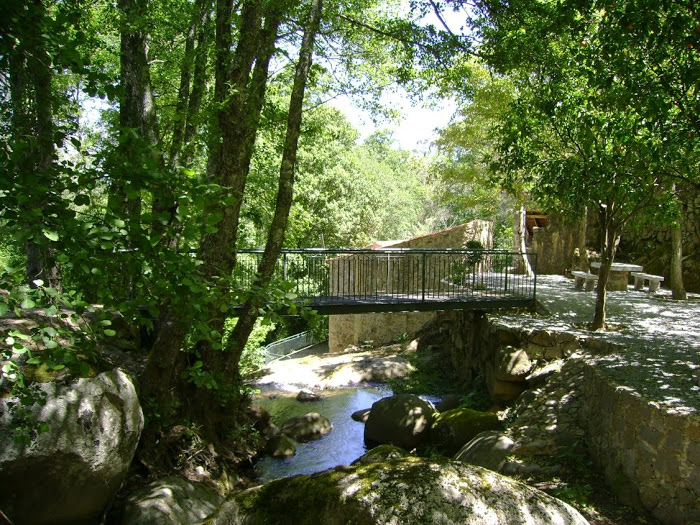
Monchique in the Serra de Monchique range of hills is usually approached from the south on the EN266, a particularly lovely drive in late February and early March when roadside mimosa bushes are in brilliant yellow bloom.
On the way up, stop at the village of Caldas de Monchique, which has been a spa for at least 2,000 years. It sits in a well-wooded little ravine which resounds in early summer to the song of nightingales.
The Romans appreciated the curative powers of the waters here in the days of Augustus Caesar. In medieval times, King João II sought a cure for dropsy. In recent years, many visitors to the local clinic have benefited from various water therapy treatments for rheumatism, back pains and respiratory and muscular complaints. There is a residential block for visiting patients, but it only operates during the summer months.
At the top end of the village is a tree-shaded walk and picnic area, a square and cafés with outside tables, and a pavilion where you can slake your thirst free on natural spring water straight out of the ground. Unfortunately, it tastes rather like rotten eggs. At the lower end of the village is a commercial bottling plant producing water which tastes a lot better.
The whole of Caldas is undergoing a process of improvement and renovation, but hopefully its quiet, old-fashioned charm will be retained.
Monchique is a market town for the products grown or hand-made in the surrounding hills, especially timber, cork, smoked ham, honey, aguardente, basketwork, leather goods and woollen sweaters.
Take a wander around the narrow, cobbled streets in the vicinity of the parish church with its Manueline doorway and polychromatic tiles. Eating in Monchique is optional, but drinking is obligatory. Find a hole-in-the-wall bar and ask for a shot of “medronho”. You might like it and come away with a litre of the stuff disguised in a coke bottle. The ladies might prefer the taste of the locally-made “brandymel”, a honey-tasting brandy liqueur.
At the square, on arrival at Monchique, the main road bears right and heads on up over the scenic hills towards the province of Alentejo in the direction of Lisbon. Curve left around the square and follow the FÓIA sign to reach the Algarve’s highest point at 900 metres. The road runs all the way up beyond the tree-line to the rocky summit which, unfortunately, is not itself a beauty spot due to a forest of telecommunications towers and aerials and a no-go military installation.
The many restaurants on the right-hand side of the road from Caldas to Monchique and from Monchique to Fóia are renowned for their finger-lickin’ chicken piri-piri lunches. Price and service in all are about the same. On Sundays they are all crowded with Portuguese families up from the coast.
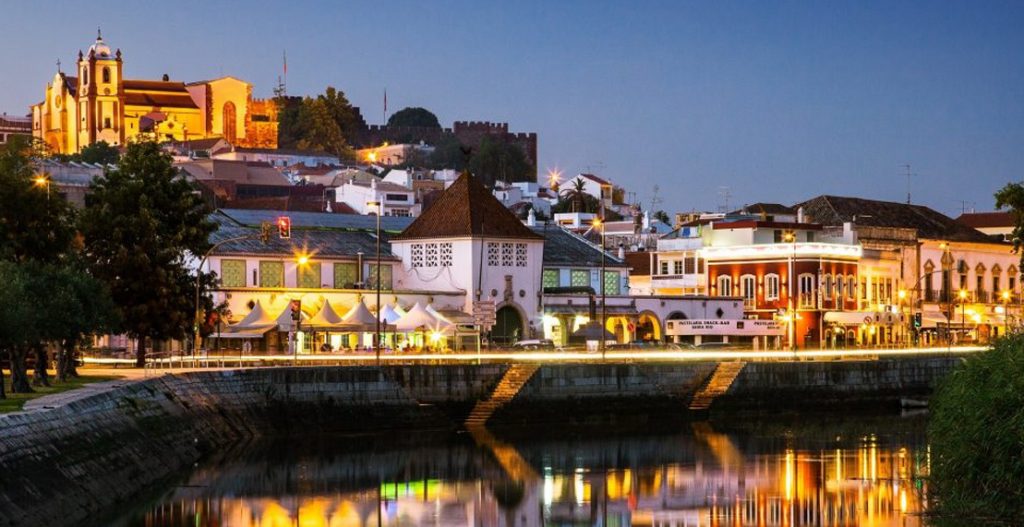
Silves is at the heart of one of Portugal’s best citrus growing areas. It also has factories processing cork. Although now an agricultural centre, its fascination for visitors is historical. The town’s two most visible buildings, its red sandstone castle and the red and white cathedral next to it, are reminders that in medieval times this was the most strongly fortified and most strenuously fought over place in the Algarve.
The Romans had a secure settlement at Silves, but it was the Moors who built it into a fine, prosperous town with gleaming minarets and bazaars brimming over with merchandise. They called it Xelb and made it their regional capital. It was a place of peace and plenty in the 12th century. Then in 1189 Portuguese Christian forces, aided by thousands of English, German and Flemish Crusaders on their way to the Holy Land, attacked the town. They razed everything outside the town walls and lay siege to the castle.
The siege lasted six weeks and ended with an agreement by the Muslims to surrender if they were allowed to leave for the Moorish city of Seville taking with them whatever possessions they could carry. Portugal’s King Sancho I agreed. To his horror the Crusaders, all mercenaries, stripped the defeated and departing Moors of everything of value and then went on a looting rampage through what was left of the town. After three days of this, the King was so appalled that he ordered the Crusaders back to their ships moored in the river below.
The following year, England’s Richard the Lionheart helped defend Silves from a counter-attack by the Muslims. The year after that, yet another attack and a month-long siege by the Muslims exacted revenge for the 1189 humiliation. It was 1231 before the castle finally capitulated to the Christian forces of Afonso III, whose statue stands, sword in hand, just inside the castle gates today.
The castle is open to the public, but its ghastly past is lost amid well-tended jacaranda trees, oleander shrubs and flowerbeds. The cistern, which held sufficient water to last out a year-long siege, is permanently closed. Apart from bits of the walls, the only Moorish feature left in the castle is a well, originally Roman, 65-metres deep. Another Moorish well is the central feature of a small, modern museum in a side street not far from the castle.
The reconquest of Silves was celebrated by the building of a cathedral on the site of a mosque. Much restored and rebuilt over the years, it contains the tombs of some of the Crusaders who died there.
The Crusaders arrived to do battle on ships which were able to sail all the way up the river to the town. Silting and dam building have reduced the river to a tidal stream. The oldest of the two bridges which straddle it, the Ponte Romana, is old and no longer usable, but it is not as old as its name suggests.
The last item of any historic significance still surviving in Silves is an intricately carved piece of sculpture crafted in the 16th-century. Situated on the left side of the road as you leave Silves for Messines, it is known as the Cross of Portugal, though nobody seems to know.
Silves is a place a great many tourists visit for an hour or two. Not many stay overnight, though you can do so comfortably.
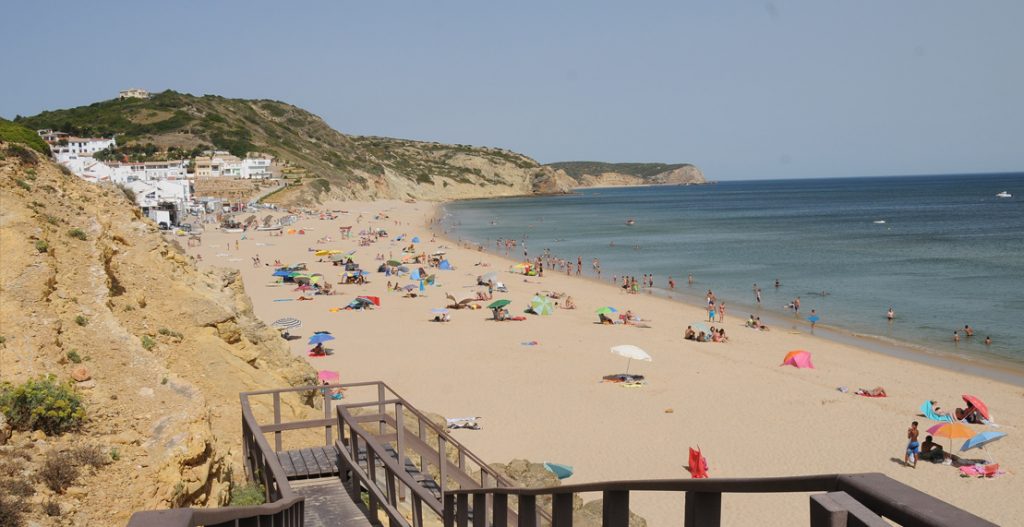
The small village of Salema lies a dozen kilometres to the west of Lagos, beyond the villages of Luz and Burgau, and is perhaps one of the most unspoilt fishing villages on the Algarve. Narrow cobbled streets wind past fisherman’s cottages, and you will find a quiet, friendly atmosphere in the local bars and restaurants. You may find you have to share the beach with the comings and goings of local fishing boats, yet its sheltered bay and sweep of fine sand have ample room for all. Nearby is the golfing resort of Parque da Floresta
If you don’t fancy the drive up to Lisbon but would still like to see the capital city, take a coach. There are day trips organised by tourist operators. If you would like to stay over in Lisbon there are regular coach services from Lagos at very affordable fares.
There are many superb golfing facilities and water parks within an easy drive.
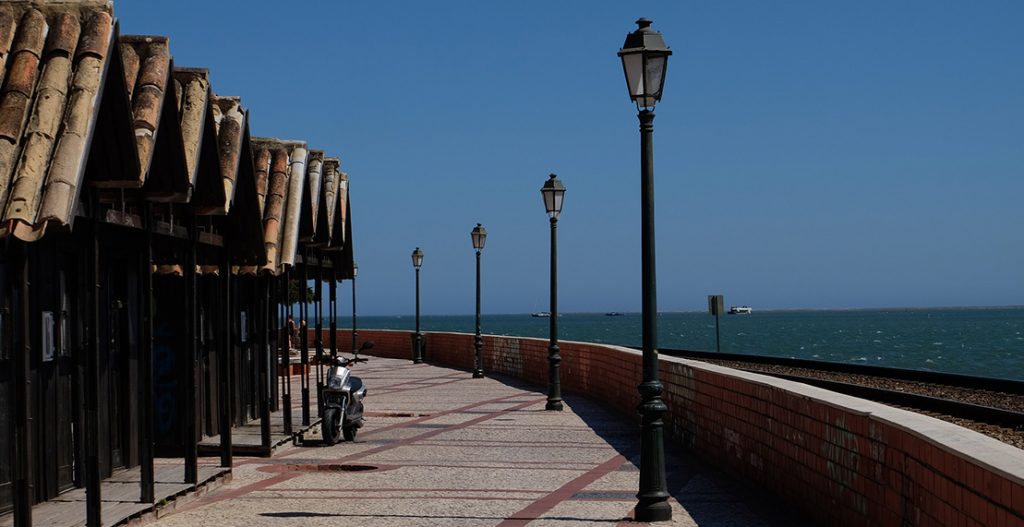
Faro is not a resort town. It is an earnest Portuguese provincial capital. The airport, about 7 km from the centre, is the closest most visitors get to it. This is a pity because it has a number of attractions.
Best of all is the old walled town with its quiet, cobbled streets and its 16th, 17th and 18th century buildings. To get there, follow the centro signs to the Praça D. Francisco Gomes next to the harbour. Here you will find the Manuel Bivar gardens, at the enclosed end of which, next to the Turismo, stands the imposing Vila do Arco. Go through the archway and you are immediately in the old quarter.
The small Cathedral in the centre of the Largo de Sé dates from the mid-13th century and was probably built on the site of a Moorish mosque. The fine old buildings on the perimeter of the square include an 18th century episcopal palace and the current town hall. The statue in the square is of Bishop Francisco Gomes, who co-ordinated the rebuilding of Faro after it was destroyed by the great earthquake of 1755.
A short walk away, but still within the walled town, is a smaller square with a grander statue. It is that of Dom Alfonso III, who conquered the last strongholds of the Moors in Portugal in the 13th century. He is standing in front of the former Convent of Nossa Senhora da Assunção, now Faro’s Archaeological and Lapidary Museum full of fascinating artefacts from prehistoric to modern times.
Faro has two other museums. The Ethnological Museum gives an insight into the traditional lifestyles of the region. The Maritime Museum has lots of models, including Vasco da Gama’s ship São Gabriel, and an elaborate tuna-catching trap.
The most lavishly adorned of Faro churches is that of Nossa Senhora do Carmo. It is also the spookiest. It has a bone chapel with the skeletal remains of 1,245 former monks. An inscription over the doorway translates to: “Stop here and think of the fate that will befall you.”
